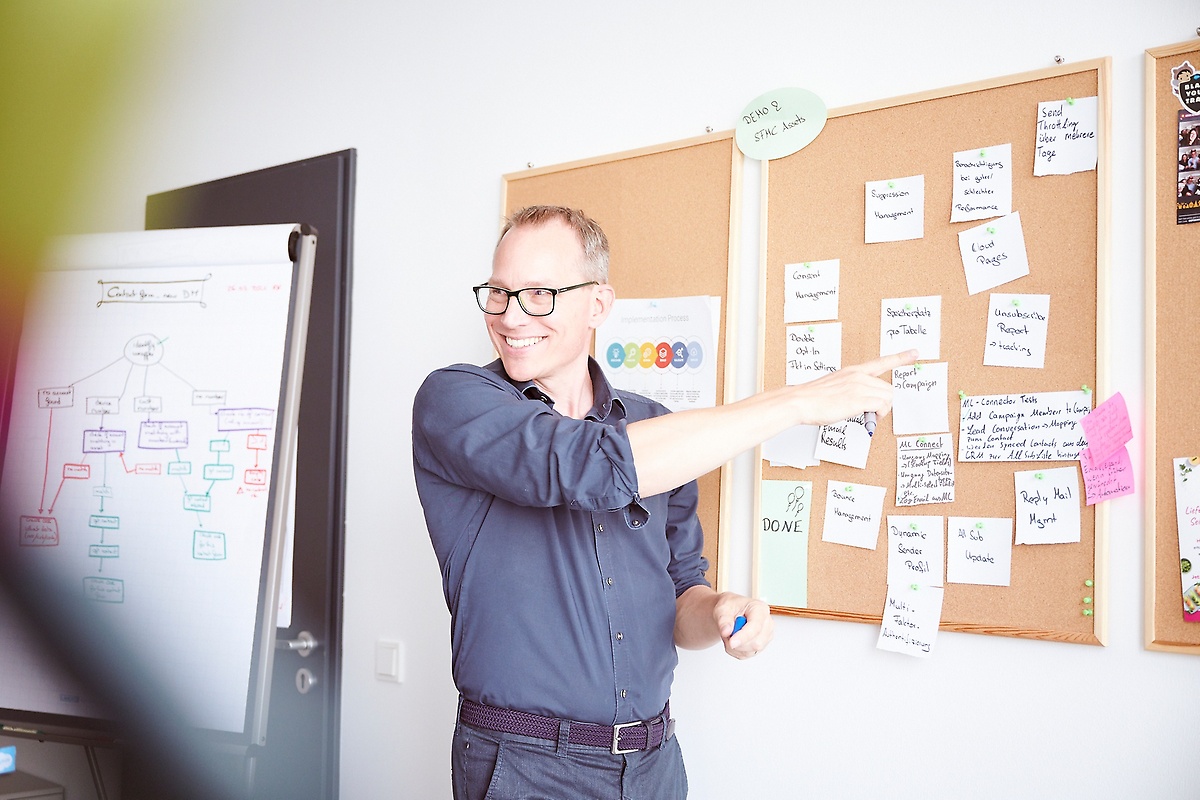The progresses being made in the digitalisation process pose great challenges and lead to changes not only in the economy, but also in public authorities. An overview and understanding of various internal and external influencing factors is essential in order to overcome these challenges and to be able to initiate necessary change measures. Managers often lack the time in their workday to deal with future innovations and topics and to analyse their possible influence on the authority where they work.
The health check features 18 indicators from which focal points can be selected and used for the analysis of the current state. These include the use of new technologies, the consolidation of software and hardware, the ability to innovate, knowledge management and sustainability and the environment, among others. Requirements and challenges are then identified and prioritised in the Interaction Room. Afterward, targeted innovation methods are used to develop and deploy prototypes in cooperation with the help of the design thinking approach and then the customer’s requirements can be implemented.
On the one hand, the benefit lies in the evidence-based analysis of the current situation. Based on these, an overall picture of the organisation emerges, in which precise opportunities for improvement in various areas are identified. In the next step, concrete implementation options are identified and then implemented by our experts. In this way, the challenges are successfully mastered through the proactiveness of the organisation. Furthermore, a dialogue is initiated at decision-making level regarding the current state of innovation.
Along with broad theoretical knowledge, we also have extensive practical experience gained by taking part in numerous design thinking workshops and training seminars. We provide you not only with a professional coach to teach you design thinking methods. We also supply a domain coach who is able to give suggestions on how to implement ideas generated during the brainstorming session and support you until the innovative solution has been implemented. The benefits are plain to see:
1. adesso has successfully deployed design thinking as a proven method for customers in multiple projects.
2. Added value is generated through collaboration between a design thinking moderator and a technical expert.
3. Our expertise extends beyond producing a prototype. We also provide support during the development process as required in the relevant situation.


